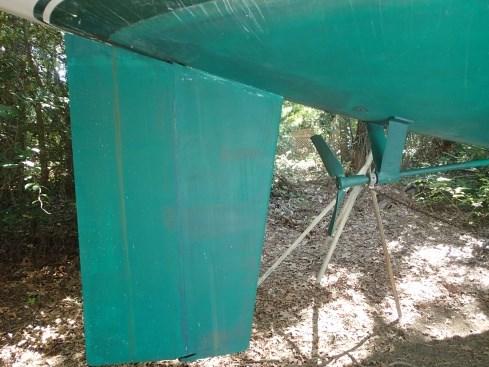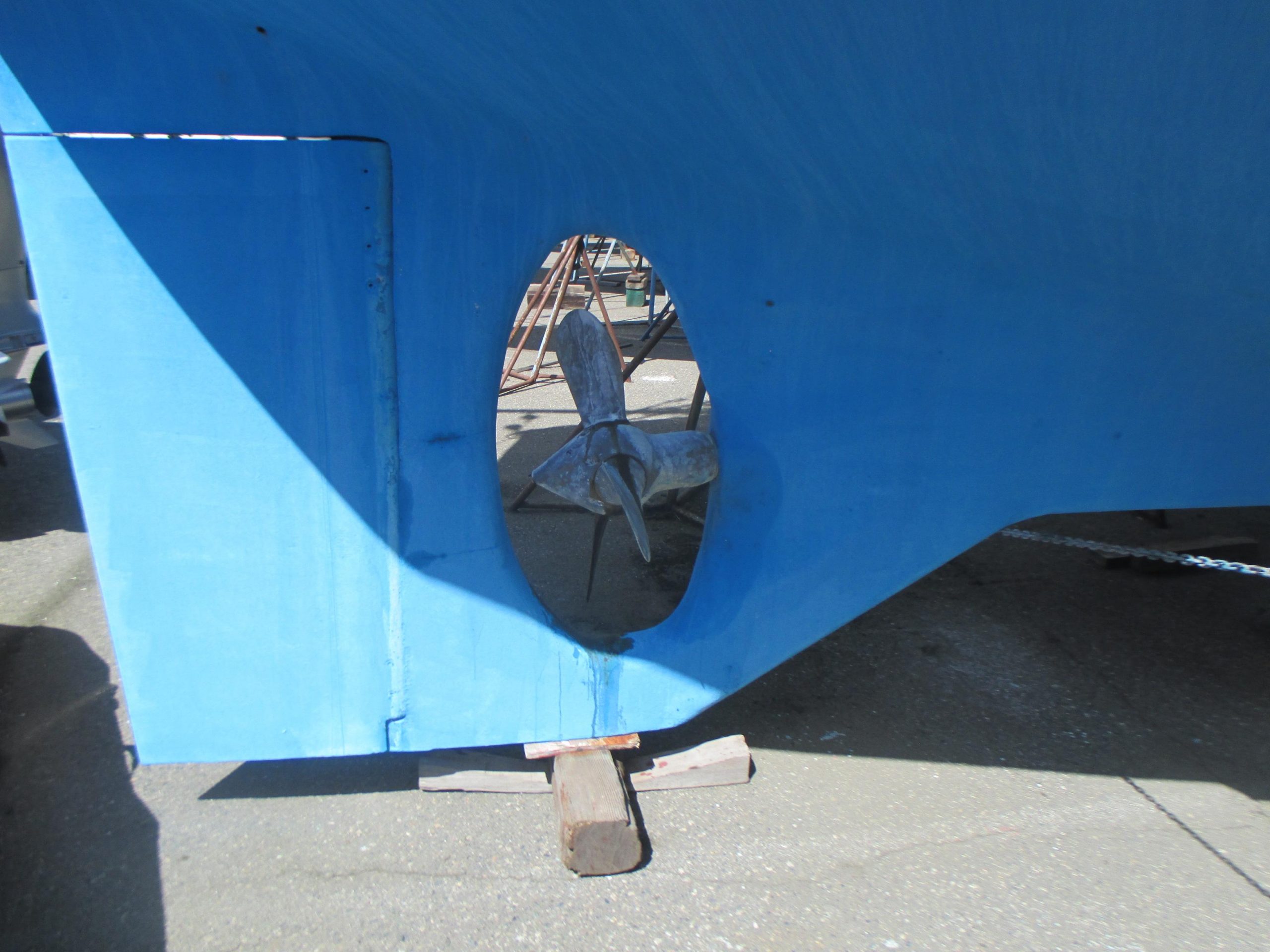A propeller on a sailboat is a bit of an oxymoron, because lets be honest, a sailboat isn’t designed to motor, it’s designed to sail. The hull shape, keel length, and rudder design, in fact everything below the waterline, has been meticulously devised to be as efficient as possible under sail. Except, of course, the prop. That’s designed to be efficient when being spun at high speeds by an engine. Since very few sailors these days put to sea without an engine, it becomes a game of compromise.
The problem is that the characteristic that make a propeller efficient, can slow down a boat when sailing. So, how do you mitigate the drag caused by a propeller at rest, while at the same time ensuring it can deliver maximum power while in use? This is a riddle that boat and propeller designers have been working on for decades.
Types Of Propellers
There are three main designs when it comes to sailboat propellers; Fixed, folding and variable pitch (feathering). How you sail, how often you motor, and how quick you need to get to your destination will all determine which style of propeller is right for you.
Fixed Props (Or Fixed Pitch Props)
A fixed prop is what most people think of when they think of a propeller. They typically has 3, 4, or 5, blades, which can vary in profile but are usually large and foil-shaped. The angle at which the blades are attached to the centre, or hub, of the propeller remains ‘fixed’, or stationary at all times, i.e. a “fixed pitch”. The blades are designed to be efficient when spun in both forward and reverse, however there is some loss of thrust in reverse.
Above: A fixed pitch prop on a 1982 Gulfstar 44 sailboat for sale on YachtWorld by McNally Yacht Sales in Cotuit, MA. Photo via McNally Yacht Sales.
Since these propellers do not change shape they can be installed in tighter openings, such as a rudder cut-out, easier. As the angle of the blades are fixed, there is no delay reaching maximum thrust when spinning, which means maximum speed for the vessel. However, the static position of the blades also means this style of prop produces maximum drag when sailing. These propellers are the least expensive and easiest to maintain, as they have not moving parts.
Folding Props
Folding propellers were designed in the 60-70’s for high performance sailboats that were trying to reach maximum speeds during races. These props have blades that are attached to the hub at a fixed angle via a hinging mechanism. As the propeller shaft spins forward the blades fling open under centrifugal force, and when motoring in reverse the blades remain open due to water pressure. Water flowing over the propeller when sailing, causes the blades to ‘fold’ aft wards at the hinges, creating a streamlined bullet-shape and reducing drag.
Above: A bronze 4-blade folding propeller rigged to a 2012 Moody 62 DS sailboat for sale on YachtWorld by YBI Yacht Broker International in Spain. Photo via YBI Yacht Broker.
A common complaint about folding props is at low speeds the prop can also be slow to react, sometimes only ‘throwing’ one blade into position. As well, with only two blades these props can cause the vessel to “crab-walk” when motoring in reverse. Both of these quirks affect vessel maneuverability, and since that’s what you’re looking for when motoring, it can be frustrating.
This design does a great job at reducing drag, but as it folds along the length of the blades, it requires a lot of clearance aft to be installed safely. There is a three-bladed design on the market, however with a higher price tag than the popular two-bladed style most boaters opt for a three-blade feathering propeller. A folding propeller averages 2-4 times the cost of a fixed propeller.
Variable Pitch Props (Feathering Props)
A feathering prop is a bit of a hybrid of the fixed and folding propeller. It looks more like a fixed prop, with 3 or 4 large blades, but those blades move when not in use, streamlining the shape of the propeller. Estimates state that a feathering prop will reduce drag over 85% when compared to a fixed propeller of the same size.
Above: A custom Hundested variable pitch propeller on a 46-foot 1983 Ted Brewer Motorsailer boat for sale on YachtWorld by Anacortes Yachts & Ships in Anacortes, WA. Photo via Anacortes Yachts & Ships.
The blades of a feathering prop are attached to the hub with an internal bevelled gear mechanism and use the torque of the propeller shaft to turn and lock the blades into position for motoring. The blades rotate so that the working face of the propeller is pointed forward or aft to match the direction of travel. This means that the prop has the same thrust in both forward and reverse gear. When sailing the flow of water over the prop causes the blades to turn 90 degrees, so that slim edge of the blades faces fore and aft, reducing drag. Since as the blades only rotate on the hub, a feathering prop doesn’t require extra clearance aft like the folding prop does.
Most feathering propellers are variable pitch, which means the user can adjust the angle of the blades in relation to the hub to tweak performance. This adjustment can be done without removing the propeller from the shaft, and some manufacturers say this can even be done in the water. However, if this adjustment requires partial disassembly of the propeller, a diver with a steady hand is a must. Mostly due to their sophisticated gearing, feathering propellers are 4-6 times the cost of a fixed prop.
Choosing The Best Propeller For Your Boat
Fixed propellers are the workhorses of the bunch, but they have been compared to dragging a bucket behind the boat while sailing. Folding and feathering propellers definitely reduce drag, but unless you are planning on doing multi-day passages, you may not notice the extra ½-1kt that you recoup. But before you can decide which style of propeller you want to install, or whether changing from one design to another is viable, there are a few key factors to consider.
Type of Boat
Every hull design is different, and what propeller suits one type of sailboat may not even fit under the boat next door. Choosing the right propeller starts with knowing a few things about the vessel. Propeller specifications – blade shape and pitch (blade angle)- are matched to hull design, LOA ,and displacement to try and reach peak performance. Shaft diameter, and whether the shaft is tapered is also important. Vessels with a sail drive may be limited in prop choice, as not all manufacturers make propellers to suit.
Clearance
Knowing how much clearance there is between the prop shaft and the undersize of the boat’s hull, or if the propeller is in a cut-out between the keel and the rudder, will determine the maximum diameter of propeller than can be installed. Propeller clearance is measured from the last shaft support. The distance between the last shaft support and the propeller is called overhang, and it ideally should not be greater than 1.5 X the diameter of the prop shaft. It is also recommended that the space from the blade tip to the hull be minimum 10% of the propeller diameter. For example a 20” propeller should have 2” of clear water on all sides.
Engine Specifications
Propeller specifications also must be matched with engine specs. Knowing the horse power rating, the maximum RPM, and the transmission gear ratio of your engine will help determine what angle of pitch the blades should be set at. A propeller that is over pitched (has a greater blade angle than recommended) will overload the engine, and a propeller that is under pitched (has too flat of a blade angle) will not provide optimal thrust and speed.
For production boats that have not been altered many of these measures can be sourced online. Propeller manufacturers are also great resources as they usually have an extensive data base and can recommend size and pitch measurements that best match your set up.
Which ever style propeller you choose, just remember, 1mm of growth on your prop can result in approximate 12% lose in efficiency. So, keeping your existing prop clean might be just as good as swapping it out for a new one.
Related







